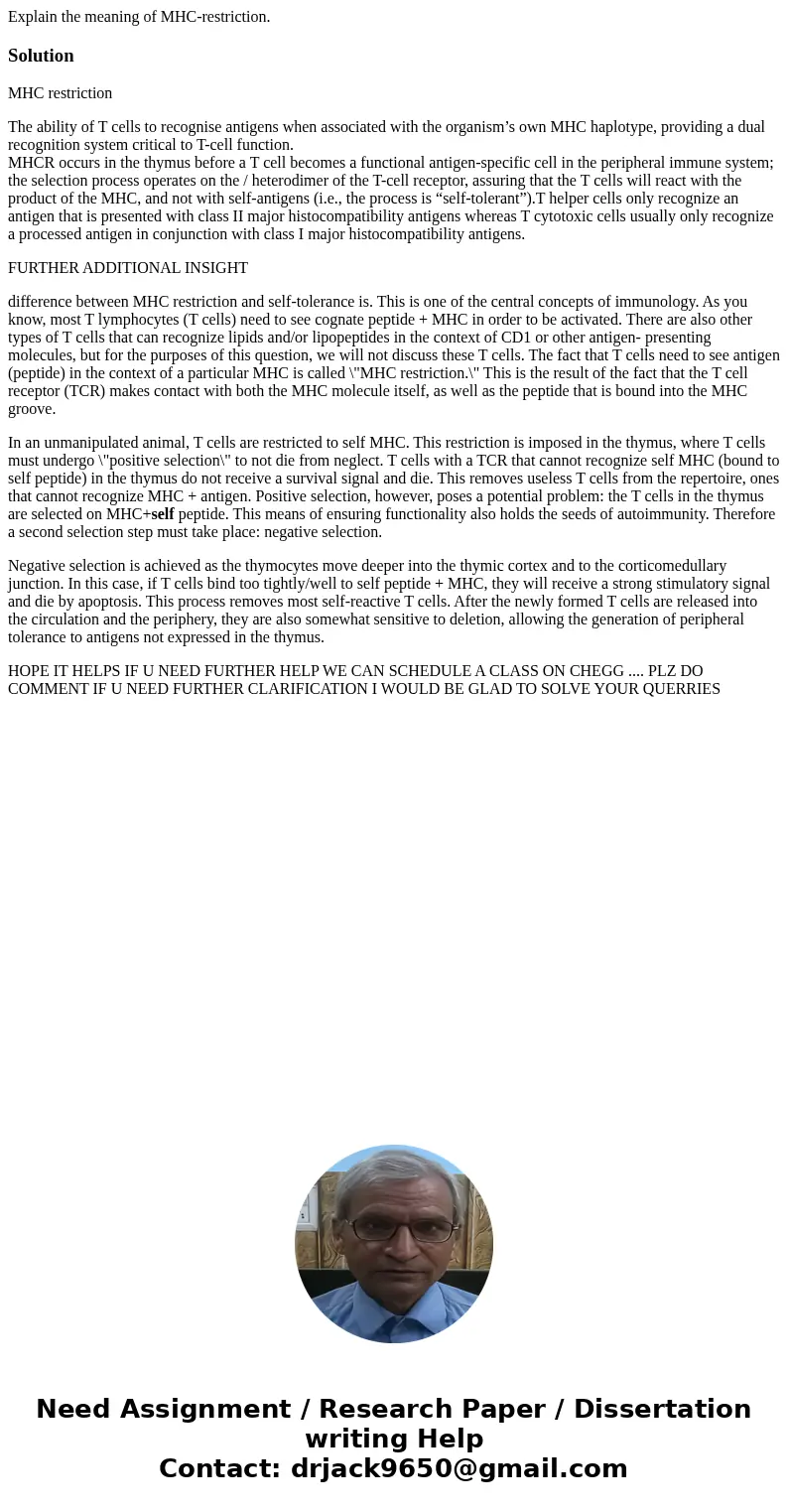Explain the meaning of MHCrestrictionSolutionMHC restriction
Explain the meaning of MHC-restriction.
Solution
MHC restriction
The ability of T cells to recognise antigens when associated with the organism’s own MHC haplotype, providing a dual recognition system critical to T-cell function.
MHCR occurs in the thymus before a T cell becomes a functional antigen-specific cell in the peripheral immune system; the selection process operates on the / heterodimer of the T-cell receptor, assuring that the T cells will react with the product of the MHC, and not with self-antigens (i.e., the process is “self-tolerant”).T helper cells only recognize an antigen that is presented with class II major histocompatibility antigens whereas T cytotoxic cells usually only recognize a processed antigen in conjunction with class I major histocompatibility antigens.
FURTHER ADDITIONAL INSIGHT
difference between MHC restriction and self-tolerance is. This is one of the central concepts of immunology. As you know, most T lymphocytes (T cells) need to see cognate peptide + MHC in order to be activated. There are also other types of T cells that can recognize lipids and/or lipopeptides in the context of CD1 or other antigen- presenting molecules, but for the purposes of this question, we will not discuss these T cells. The fact that T cells need to see antigen (peptide) in the context of a particular MHC is called \"MHC restriction.\" This is the result of the fact that the T cell receptor (TCR) makes contact with both the MHC molecule itself, as well as the peptide that is bound into the MHC groove.
In an unmanipulated animal, T cells are restricted to self MHC. This restriction is imposed in the thymus, where T cells must undergo \"positive selection\" to not die from neglect. T cells with a TCR that cannot recognize self MHC (bound to self peptide) in the thymus do not receive a survival signal and die. This removes useless T cells from the repertoire, ones that cannot recognize MHC + antigen. Positive selection, however, poses a potential problem: the T cells in the thymus are selected on MHC+self peptide. This means of ensuring functionality also holds the seeds of autoimmunity. Therefore a second selection step must take place: negative selection.
Negative selection is achieved as the thymocytes move deeper into the thymic cortex and to the corticomedullary junction. In this case, if T cells bind too tightly/well to self peptide + MHC, they will receive a strong stimulatory signal and die by apoptosis. This process removes most self-reactive T cells. After the newly formed T cells are released into the circulation and the periphery, they are also somewhat sensitive to deletion, allowing the generation of peripheral tolerance to antigens not expressed in the thymus.
HOPE IT HELPS IF U NEED FURTHER HELP WE CAN SCHEDULE A CLASS ON CHEGG .... PLZ DO COMMENT IF U NEED FURTHER CLARIFICATION I WOULD BE GLAD TO SOLVE YOUR QUERRIES

 Homework Sourse
Homework Sourse